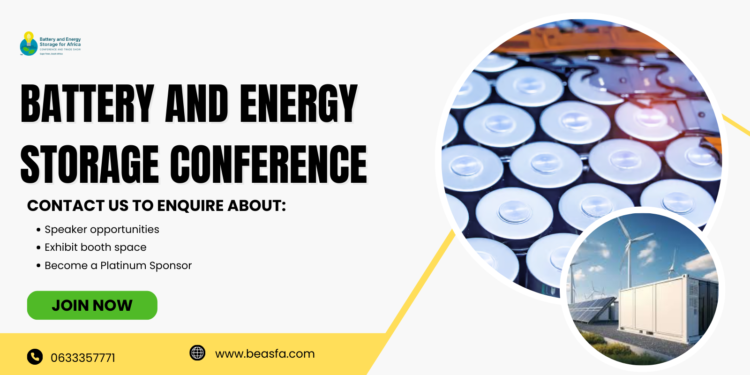The global energy landscape is undergoing a transformative shift, driven by the urgent need for sustainable solutions to combat climate change and enhance energy efficiency. The Battery and Energy Storage Conference serves as a critical platform for industry experts, researchers, and policymakers to come together and explore the latest innovations in energy storage technologies. This blog delves into the key discussions and breakthroughs presented at the conference, emphasizing how these advancements are set to future-proof our energy systems.
1. The Need for Energy Storage Solutions
As renewable energy sources like solar and wind power gain traction, the need for effective energy storage solutions has become increasingly apparent. Traditional energy grids struggle to manage the intermittent nature of these renewable sources, making energy storage essential for:
- Grid Stability: Storing excess energy generated during peak production periods allows for a more reliable supply during high-demand times.
- Increased Renewable Integration: Energy storage systems facilitate the integration of renewables into the grid, ensuring a consistent and dependable energy flow.
- Energy Cost Management: By storing energy when prices are low and using it during peak demand, consumers and businesses can reduce energy costs.
At the Battery and Energy Storage Conference, industry leaders discussed how these challenges could be addressed through innovative technologies and collaborative strategies.
2. Revolutionary Battery Technologies
a) Advancements in Lithium-Ion Batteries
Lithium-ion batteries have become the backbone of modern energy storage, powering everything from smartphones to electric vehicles. Innovations discussed at the conference include:
- Higher Energy Density: Recent developments have focused on increasing the energy density of lithium-ion batteries, allowing for longer usage times and improved performance.
- Enhanced Safety Features: Advances in battery management systems aim to minimize risks associated with overheating and short-circuiting, making lithium-ion batteries safer for widespread use.
Experts emphasized that as lithium-ion technology evolves, it will play a pivotal role in future energy systems, especially in electric vehicles (EVs) and renewable energy applications.
b) Solid-State Batteries: A Game Changer
One of the most exciting innovations discussed at the conference was solid-state battery technology. Unlike traditional lithium-ion batteries that use liquid electrolytes, solid-state batteries utilize solid electrolytes, offering significant advantages:
- Increased Energy Capacity: Solid-state batteries have the potential to provide higher energy densities, making them ideal for applications in electric vehicles and grid storage.
- Enhanced Safety: The use of solid electrolytes reduces the risk of leakage and fire hazards, presenting a safer alternative to liquid-based batteries.
- Longer Lifespan: These batteries can withstand more charge cycles, contributing to their longevity and reduced environmental impact.
Panel discussions at the Battery and Energy Storage Conference highlighted the challenges and opportunities associated with scaling solid-state battery production for commercial use.
c) Lithium-Sulfur Batteries: Unlocking Potential
Lithium-sulfur (Li-S) batteries represent another innovative approach that could redefine energy storage. Key advantages discussed include:
- Significantly Higher Capacity: Li-S batteries can theoretically provide up to five times the energy capacity of traditional lithium-ion batteries, which could revolutionize applications in electric vehicles and grid storage.
- Cost Efficiency: Sulfur is abundant and more cost-effective than the metals typically used in lithium-ion batteries, which could lead to lower overall production costs.
- Environmental Benefits: The reduced reliance on toxic materials makes Li-S batteries a more sustainable option.
Experts at the conference presented research on overcoming the technical challenges of Li-S batteries, including issues related to cycle stability and efficiency.
3. Innovative Energy Storage Solutions
a) Flow Batteries for Large-Scale Applications
Flow batteries have emerged as a compelling solution for large-scale energy storage needs. These batteries utilize liquid electrolytes contained in external tanks, offering several benefits:
- Long-Duration Energy Storage: Flow batteries are capable of delivering energy over extended periods, making them suitable for balancing intermittent renewable energy generation.
- Scalability: Their modular design allows for easy scaling to meet specific energy storage requirements without sacrificing performance.
- Cost-Effectiveness: Flow batteries can be more cost-effective for large-scale applications compared to traditional batteries, making them an attractive option for utility companies.
Discussions at the Battery and Energy Storage Conference focused on the ongoing development and deployment of flow battery technologies in various applications.
b) Hybrid Energy Storage Systems
Hybrid energy storage systems, which combine multiple technologies (such as batteries and supercapacitors), were also a highlight of the conference. Benefits include:
- Optimized Performance: By leveraging the strengths of different technologies, hybrid systems can provide faster response times and improved energy efficiency.
- Versatility: These systems can adapt to a variety of applications, from grid storage to electric vehicles, enhancing their overall utility and effectiveness.
The conference showcased several case studies demonstrating the successful implementation of hybrid energy storage solutions across various industries.
4. The Role of Digital Technologies
a) Artificial Intelligence and Machine Learning
The integration of artificial intelligence (AI) and machine learning into energy storage systems is revolutionizing energy management. Key discussions at the conference included:
- Smart Grid Management: AI algorithms can optimize energy storage and consumption patterns based on real-time data, allowing for more efficient energy use and cost savings.
- Predictive Maintenance: IoT sensors monitor the health and performance of battery systems, enabling predictive maintenance that enhances reliability and lifespan.
As AI continues to evolve, its role in energy storage will be critical in shaping the future of smart energy systems.
b) Blockchain for Energy Transactions
Another innovative discussion at the Battery and Energy Storage Conference focused on blockchain technology’s potential to streamline energy transactions. Benefits include:
- Decentralized Energy Markets: Blockchain enables peer-to-peer energy trading, allowing consumers to buy and sell excess energy directly.
- Enhanced Security: The decentralized nature of blockchain provides a secure framework for energy transactions, reducing the risk of fraud and ensuring data integrity.
The potential applications of blockchain technology in energy storage and distribution are still being explored, but the possibilities are promising.
5. Addressing Challenges and Regulatory Frameworks
a) Resource Availability and Environmental Impact
One of the major challenges facing the energy storage industry is the availability of critical raw materials, such as lithium and cobalt. Discussions at the conference emphasized the need for sustainable sourcing practices and the development of recycling processes to minimize environmental impact.
b) Policy Support and Incentives
The successful implementation of energy storage technologies relies heavily on supportive regulatory frameworks and policies. Experts stressed the importance of collaboration between industry stakeholders and policymakers to create incentives that promote the adoption of energy storage solutions.
6. Conclusion: A Sustainable Future Awaits
The Battery and Energy Storage Conference highlighted the innovative technologies and collaborative efforts necessary to future-proof our energy systems. With advancements in battery technologies, energy storage solutions, and digital integration, the potential for a sustainable energy future is brighter than ever.
As we continue to navigate the challenges of climate change and energy demand, the innovations discussed at the conference will play a crucial role in transforming our energy landscape. By embracing these technologies and fostering collaboration, we can create a more resilient, efficient, and sustainable energy system for generations to come.
The path forward is not without obstacles, but with a collective commitment to innovation and sustainability, we can ensure that our energy future is not only viable but thriving. The conversations and collaborations sparked at the Battery and Energy Storage Conference are just the beginning of a transformative journey toward a cleaner, more sustainable energy landscape.
Digital marketing is the use of the internet and electronic devices to promote products or services. It includes tactics like social media ads, email campaigns, search engine optimization (SEO), and online content to connect businesses with potential customers. It's a fast, targeted, and measurable way to reach people where they spend their time—online.








































